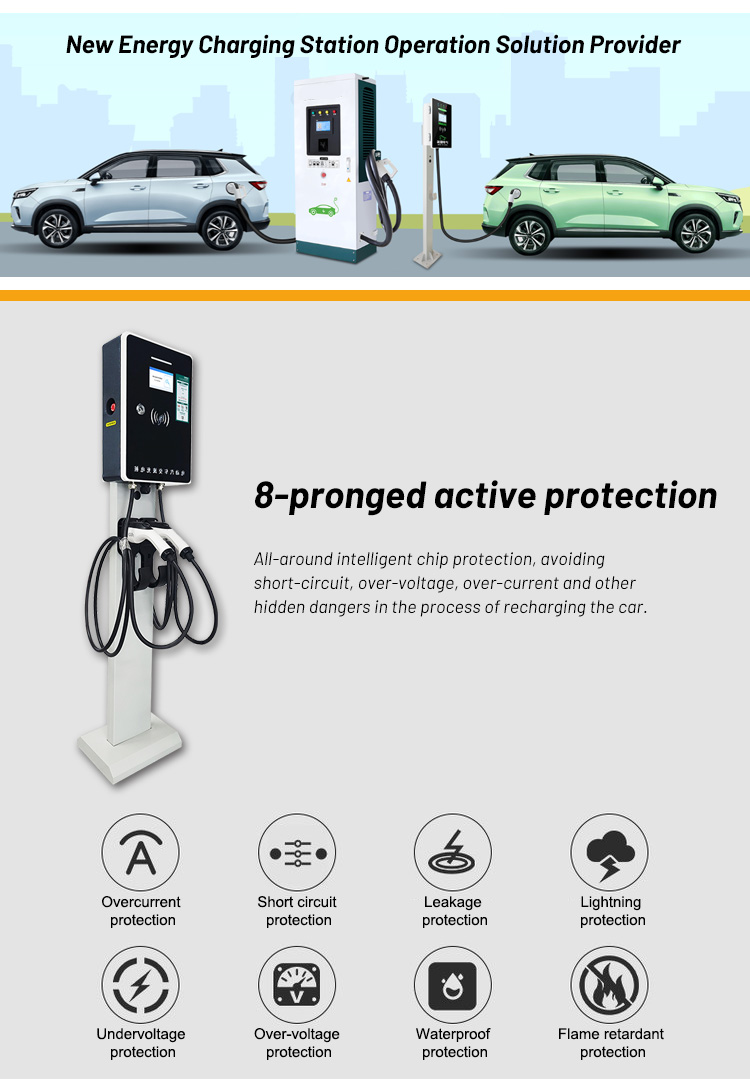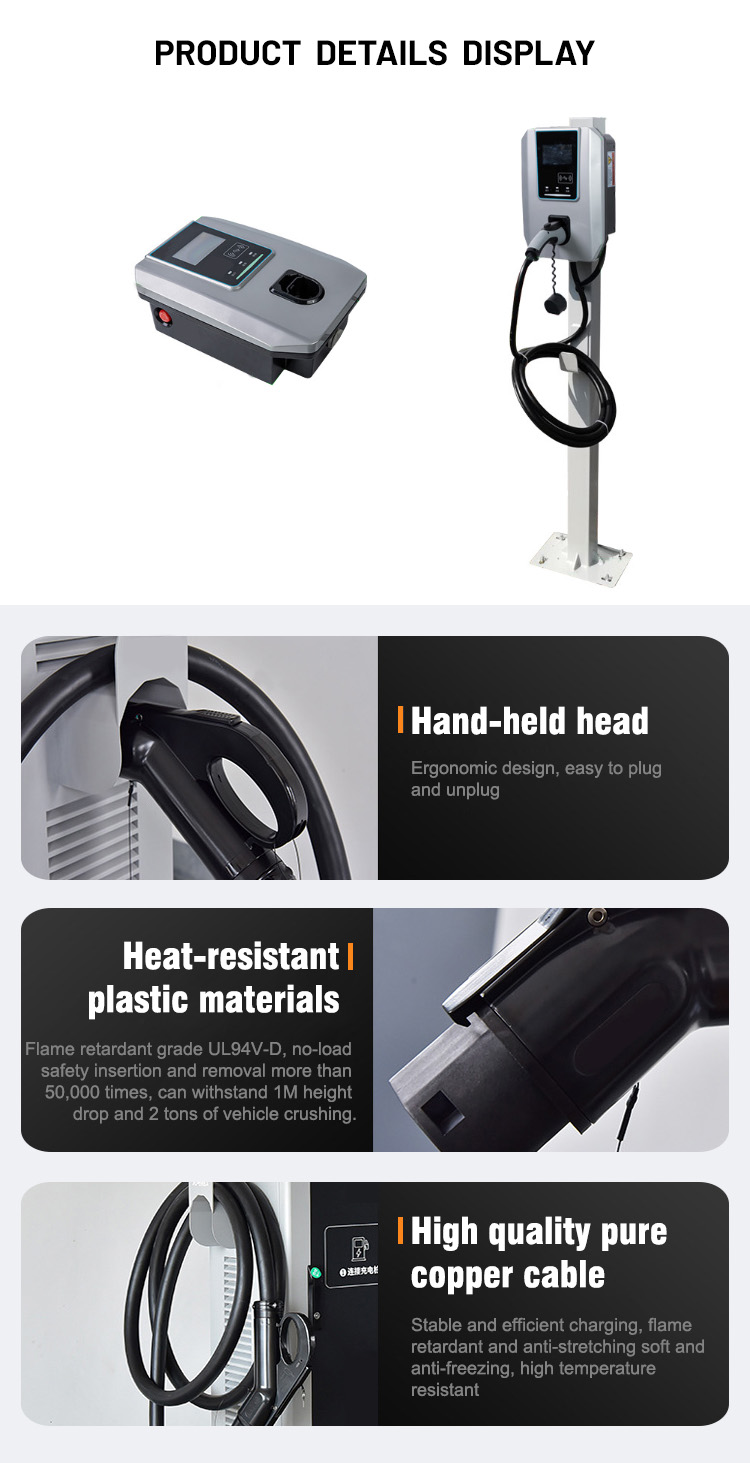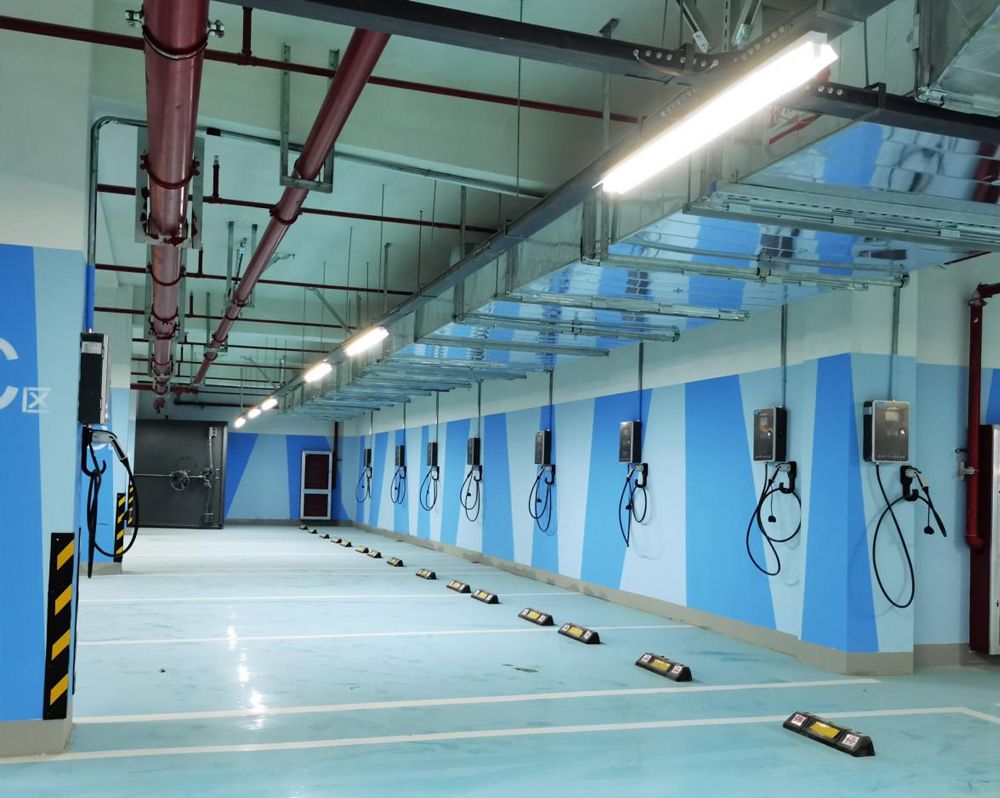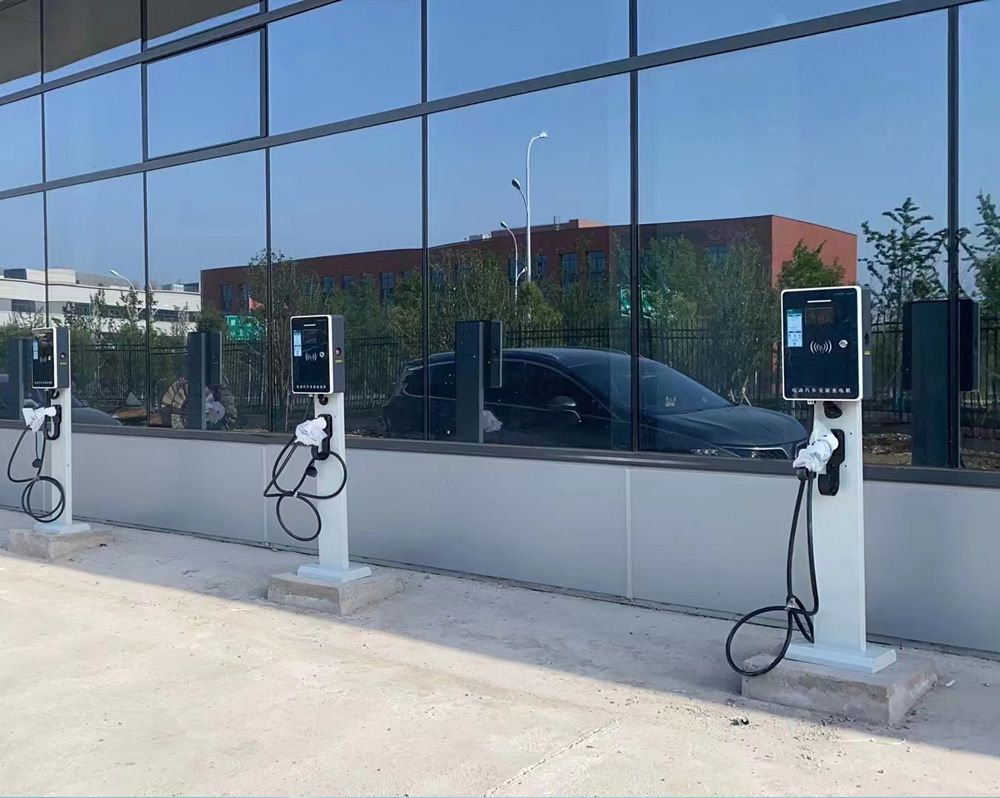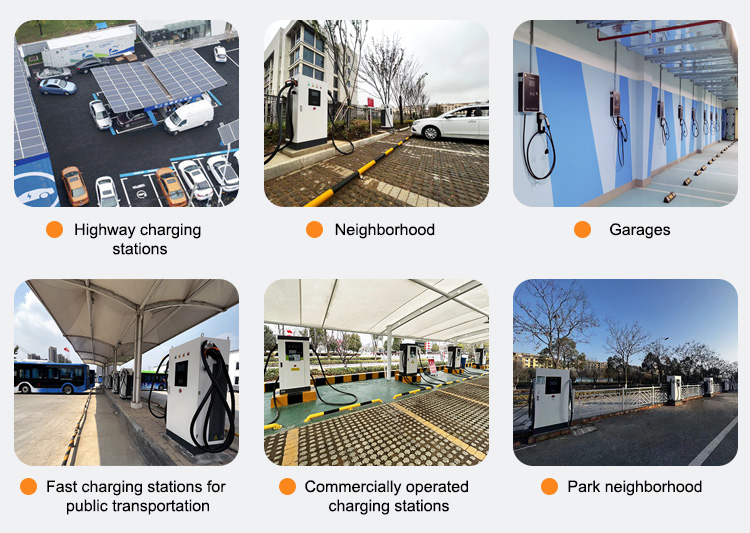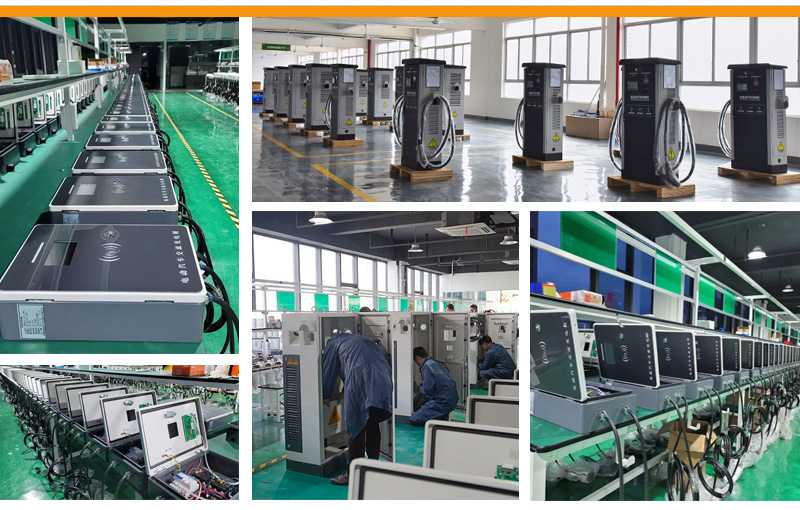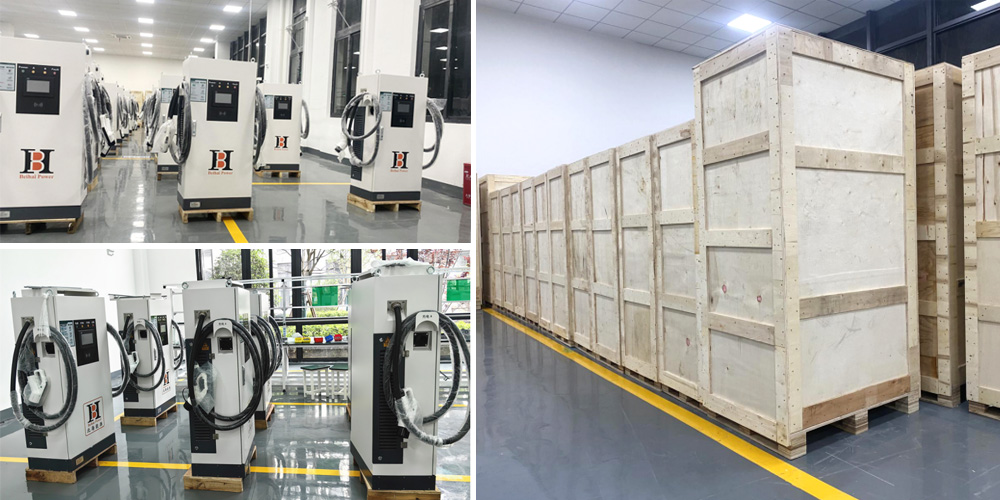OEM AC 22kw Electric Car Charger Customize Ocpp CCS Nacs 22kw 32A AC EV Charging Station with RFID
Product Description:
AC charging post, also known as a slow charger, is a device designed to provide charging services for electric vehicles. The AC charging post itself does not have a direct charging function; instead, it needs to be connected to an on-board charging machine (OBC) on the electric vehicle, which converts the AC power into DC power, and then charges the battery of the electric vehicle.
Due to the low power of OBCs, the charging speed of AC chargers is relatively slow. Generally speaking, it takes 6 to 9 hours or even longer to charge an electric vehicle (with a normal battery capacity). AC charging piles are simple in technology and structure, with relatively low installation costs and a variety of types to choose from, such as portable, wall-mounted and floor-mounted, etc., which are suitable for different scenarios and the price of AC charging piles is relatively more affordable, with the price of ordinary household models generally not being too high.
AC charging posts are more suitable for installation in car parks in residential areas, as the charging time is longer and suitable for night-time charging. In addition, some commercial car parks, office buildings and public places will also install AC charging piles to meet the charging needs of different users. Although the charging speed of AC charging station is relatively slow and it takes a long time to fully charge the battery of an electric vehicle, this does not affect its advantages in home charging and long-time parking charging scenarios. Owners can park their EVs near the charging post at night or during their free time to charge, which does not affect daily use and can make full use of the grid’s low hours for charging, reducing charging costs.
Product Parameters:
| 22KW AC (wall and floor) charging Station | ||
| unit type | BHAC-22KW | |
| technical parameters | ||
| AC input | Voltage range (V) | 220±15% |
| Frequency range (Hz) | 45~66 | |
| AC output | Voltage range (V) | 220 |
| Output Power (KW) | 22KW | |
| Maximum current (A) | 32 | |
| Charging interface | 1/2 | |
| Configure Protection Information | Operation Instruction | Power,Charge,Fault |
| machine display | No/4.3-inch display | |
| Charging operation | Swipe the card or scan the code | |
| Metering mode | Hourly rate | |
| Communication | Ethernet(Standard Communication Protocol) | |
| Heat dissipation control | Natural Cooling | |
| Protection level | IP65 | |
| Leakage protection(mA) | 30 | |
| Equipment Other Information | Reliability (MTBF) | 50000 |
| Size (W*D*H) mm | 270*110*1365 (floor)270*110*400 (Wall) | |
| Installation mode | Landing type Wall mounted type | |
| Routing mode | Up (down) into line | |
| Worksing Environment | Altitude (m) | ≤2000 |
| Operating temperature(℃) | -20~50 | |
| Storage temperature(℃) | -40~70 | |
| Average relative humidity | 5%~95% | |
| Optional | 4G Wireless Communication | Charging gun 5m |
Product Feature:
Compared with DC charging pile (fast charging), AC charging pile has the following significant features:
1. Smaller power, flexible installation: the power of AC charging pile is generally smaller, the common power of 3.3 kW and 7 kW, the installation is more flexible, and can be adapted to the needs of different scenes.
2. Slow charging speed: limited by the power constraints of vehicle charging equipment, the charging speed of AC charging piles is relatively slow, and it usually takes 6-8 hours to be fully charged, which is suitable for charging at night or parking for a long time.
3. Lower cost: due to the lower power, the manufacturing cost and installation cost of AC charging pile is relatively low, which is more suitable for small-scale applications such as family and commercial places.
4. Safe and reliable: During the charging process, the AC charging pile finely regulates and monitors the current through the charging management system inside the vehicle to ensure the safety and stability of the charging process. At the same time, the charging pile is also equipped with a variety of protection functions, such as preventing over-voltage, under-voltage, overload, short-circuit and power leakage.
5. Friendly human-computer interaction: The human-computer interaction interface of the AC charging pile is designed as a large-size LCD color touch screen, which provides a variety of charging modes to choose from, including quantitative charging, timed charging, fixed amount charging, and intelligent charging to full power mode. Users can view the charging status in real time, the charged and remaining charging time, the charged and to be charged power and the current billing situation.
Application:
AC charging piles are more suitable for installation in car parks in residential areas as the charging time is longer and suitable for night-time charging. In addition, some commercial car parks, office buildings and public places will also install AC charging piles to meet the charging needs of different users as follows:
Home charging: AC charging posts are used in residential homes to provide AC power to electric vehicles that have on-board chargers.
Commercial car parks: AC charging posts can be installed in commercial car parks to provide charging for electric vehicles that come to park.
Public Charging Stations: Public charging piles are installed in public places, bus stops and motorway service areas to provide charging services for electric vehicles.
Charging Pile Operators: Charging pile operators can install AC charging piles in urban public areas, shopping malls, hotels, etc. to provide convenient charging services for EV users.
Scenic spots: Installing charging piles in scenic spots can facilitate tourists to charge electric vehicles and improve their travelling experience and satisfaction.
Ac charging piles are widely used in homes, offices, public parking lots, urban roads and other places, and can provide convenient and fast charging services for electric vehicles. With the popularization of electric vehicles and the continuous development of technology, the application range of AC charging piles will gradually expand.
Company Profile:
Products categories
-

Phone
-

E-mail
-

Whatsapp
-

Top








